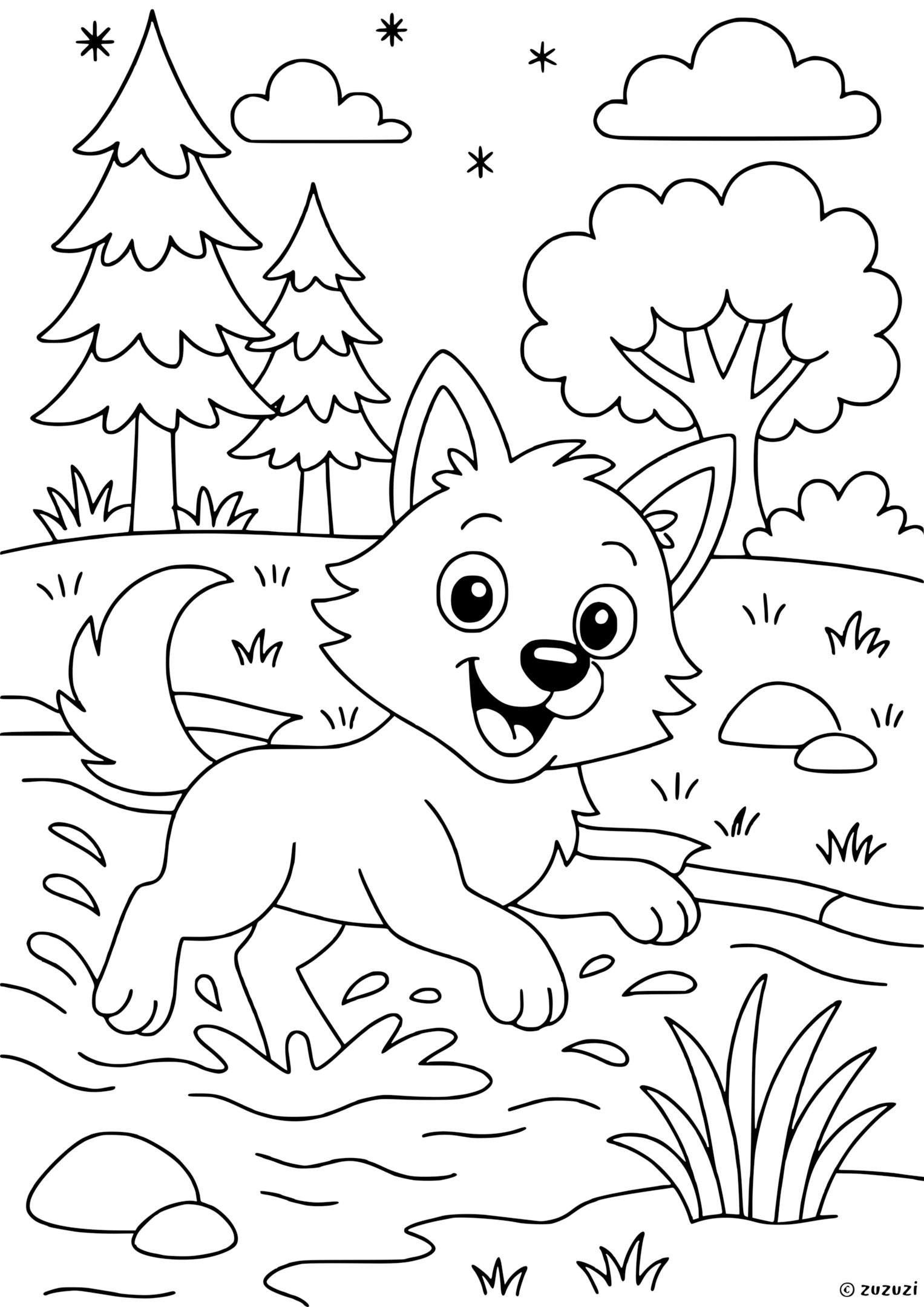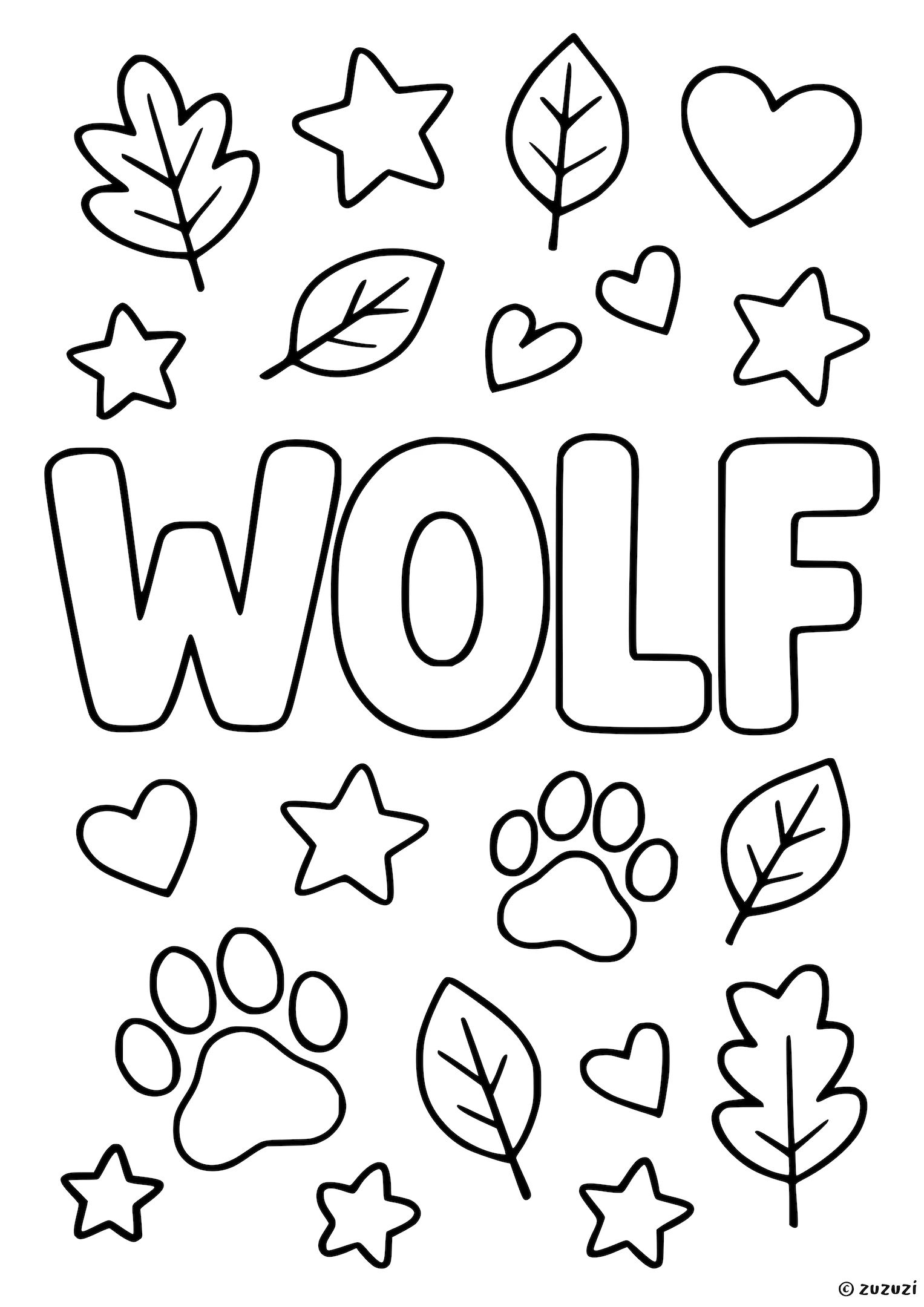Coloring ideas for Wolf
Wolves can be grey, brown, black, or even white, depending on where they live. You could try a classic grey coat with touches of white on the belly and darker grey or black on the back and tail. Their eyes are often golden or amber, and their noses and paw pads can be black or dark brown. The forest background is a great space to add green trees, rocky hills, starry skies, and cool rivers or snowy trails.
On the back of the page, why not try writing some fun facts about the Wolf, or its name in different languages? You could even give it a name of your own, or draw your own version using your imagination!
What is a Wolf?
Wolves are powerful and intelligent mammals that live in forests, tundras, and mountains across North America, Europe, and Asia. They usually live and hunt in packs, working together to take care of their young and find food. Wolves can grow to about 1.5 meters long and weigh up to 45 kilograms. They eat deer, rabbits, and sometimes fish, and they communicate using howls, growls, and body language. Wolves have thick fur to stay warm and sharp teeth to help them tear meat. They are known for their strong family bonds and teamwork, making them one of the most social animals in the wild.
How to say Wolf in different languages?
- English: Wolf
- French: Loup
- Spanish: Lobo
- Arabic: ذئب
- German: Wolf
- Chinese: 狼
- Japanese: オオカミ
- Korean: 늑대
- Portuguese: Lobo
- Italian: Lupo
- Hindi: भेड़िया
- Russian: Волк
- Turkish: Kurt


